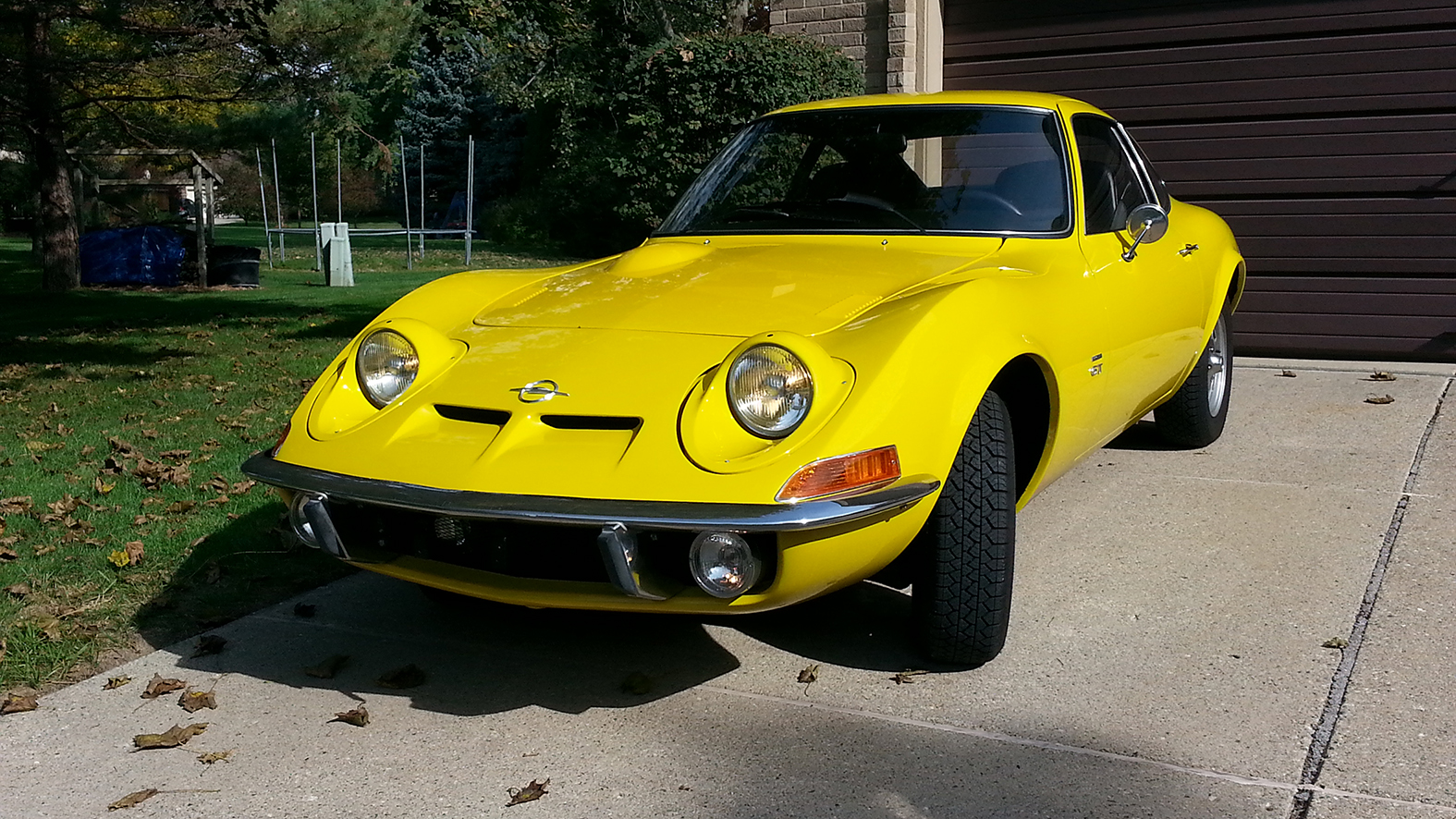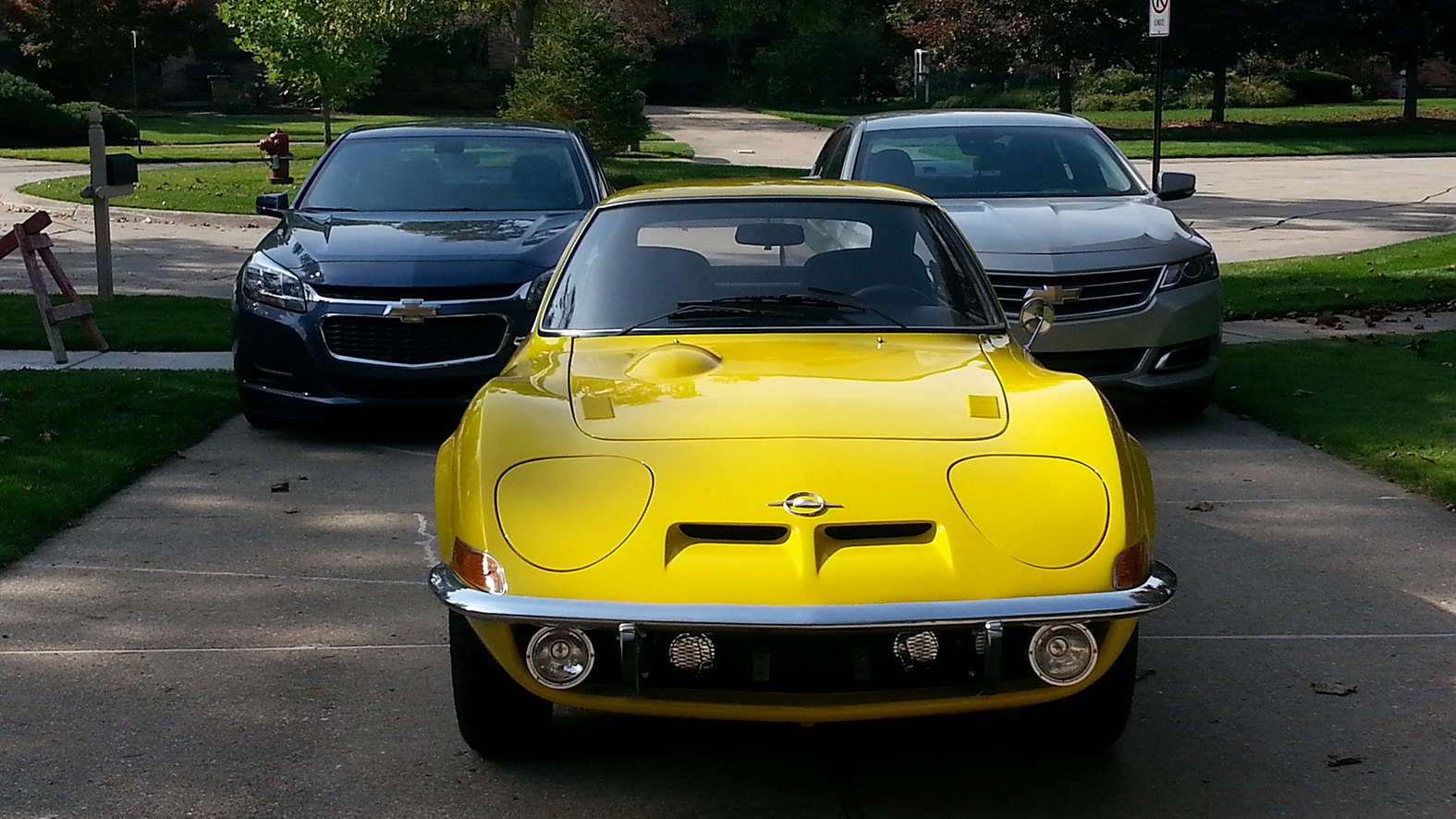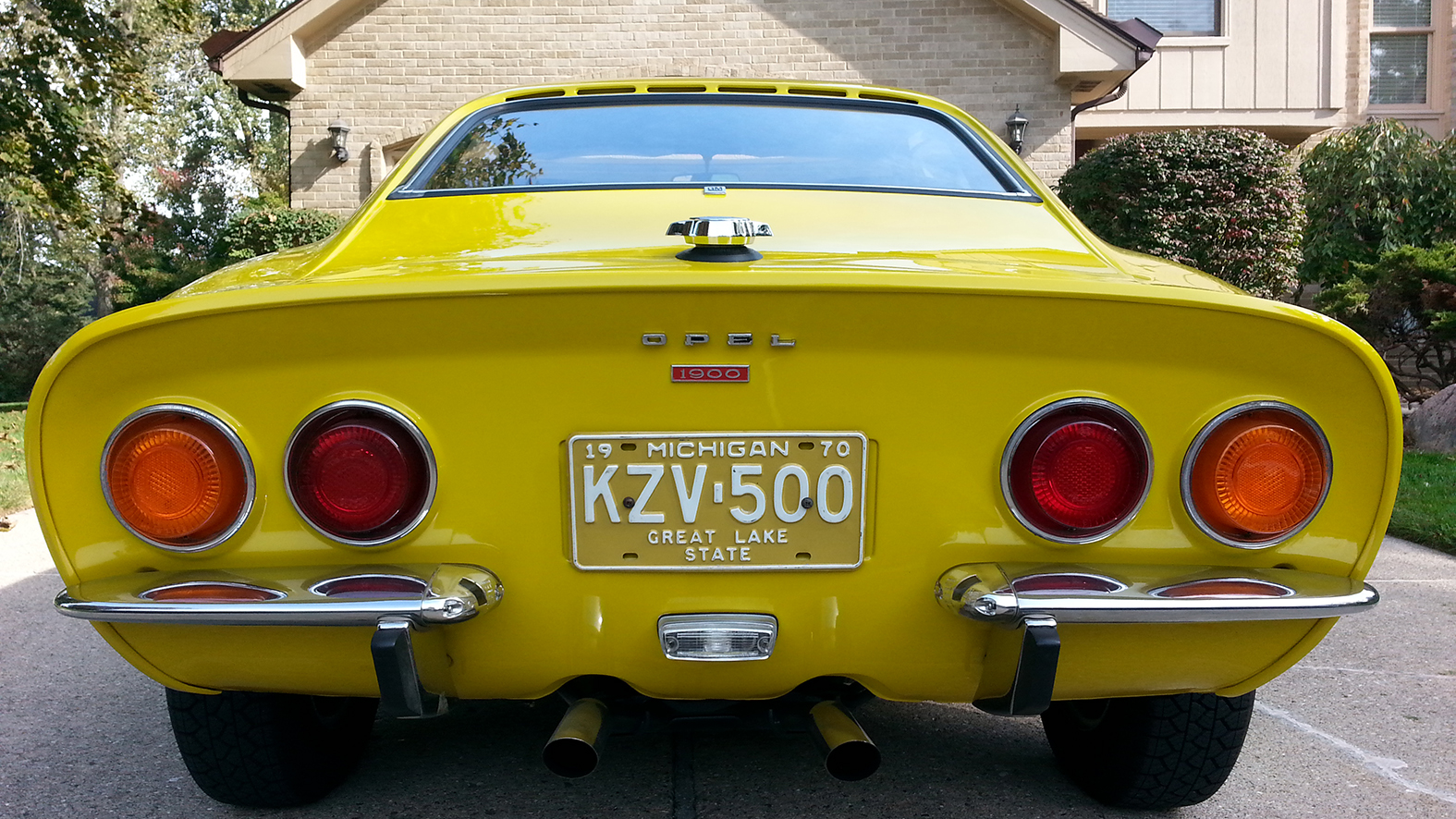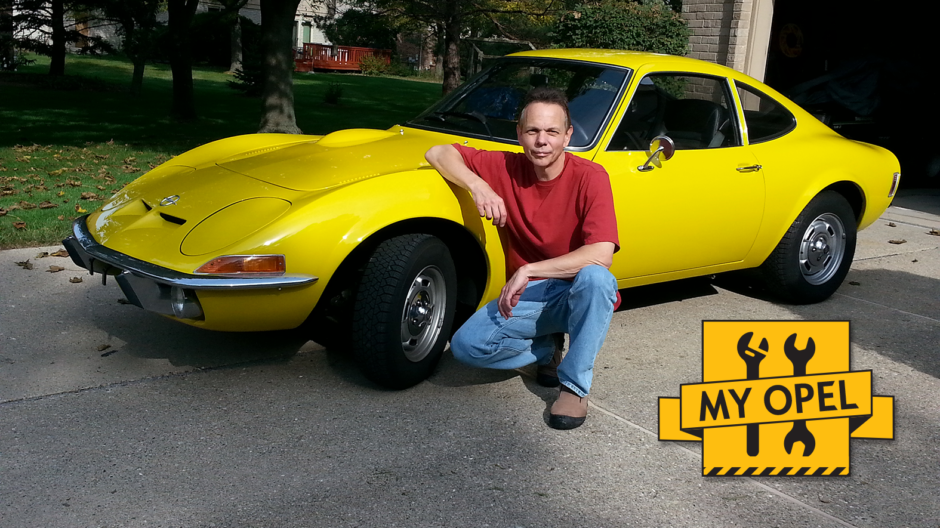
True love is boundless. This is what Klaus-Peter Martin knows for sure. His 1970 GT has made the ocean crossing between the United States and Europe three times already, more than many people. KP, as he is known to friends, laughs at the memory of how moving his job with General Motors resulted in his beloved GT traveling between continents.
“As an Opel employee in European Public Relations, I worked on the international press launch of the Opel Sintra in the United States in 1996. At the launch, one of the local people we hired to help with the event told me about her recent acquisition of a 1970 Opel GT,” he explains. “I told her that I had owned a GT in the early 1980s, but had to sell it because I was at university and needed funds. Without ever having seen her GT, I joked that whenever she wants to get rid of the car, she should give me a call. She told me she loved her ‘Lemon Baby’ – named because the car was painted bright yellow – and that she intended keeping it.”
A few months later, when already back in Germany, KP’s phone rang and he heard a familiar woman’s voice on the other end: “Do you still want the GT?” Without having ever seen the car, not even a photo, KP decided to take the plunge as the owner had asked for “a very reasonable price”. Even though he knew a fair amount of restoration would probably be needed, he didn’t know the extent of the job at hand.

Swivel it: A handle is used to expose the GT’s headlamps and turn the heads of bystanders.
Back to Germany
With the paperwork done, the GT was back on a ship heading to Germany and three weeks later, KP received another phone call saying the his GT had finally arrived. All he had to do now was spot the “Lemon Baby” in a massive parking lot. “And there it was. Yellow, yes, but with a fair amount of brown, commonly referred to as rust. And the lower half of the car had been painted with black under-body paint. In a nutshell, the car was in a pretty bad state. But that didn’t bother me. With temporary license plates attached, I headed home,” KP recalls.
»
And there it was. Yellow, yes, but with a fair amount of brown, commonly referred to as rust.
Sitting inside the car, he instantly had that special GT feeling once again – the deep seating position, tiny interior space and the typical smell only found in GTs. “Luckily, the engine started, but was running on just three of the four cylinders. Ok, first gear, rev up, release the clutch and… we were moving. OK, sort of moving,” he smiles. “The shifter and entire transmission were bobbing up and down, left and right, making driving almost impossible. All the rubber parts of the transmission mounts had either seen better times or were simply missing.” After a slow and careful “drive” home, the GT was parked safely in a garage for almost three years. During that time, KP had collected a great deal of spare parts to get the renovation going “one day in the future”.
Destiny comes calling
And then the GT’s unique destiny kicked in once again as KP was offered the opportunity to go on a three-year assignment at the GM headquarters in Detroit, Michigan, US. “I didn’t want to leave the GT sitting in my garage for another three years. And honestly, the car needed real professional help, especially with its perforated body,” he said. “After all, the only sheet metal parts you can remove without using a grinder are the front lamps, doors and the hood. The rest is on big piece welded together.”
»
We get the GT restored by people who had a love affair with Opel’s legendary coupe.
With the spare parts he had already purchased, the yellow GT made its way on a flatbed to an Opel dealer who specialized in GT restorations, Autohaus Eduard Krieg GmbH & Co. KG in Mellrichstadt. “My wife and I decided to get the GT restored not only by the people who are most capable, but also the ones who had a love affair with Opel’s legendary coupe since its launch decades earlier,” KP remarked. The people at the dealership had a look at the “Lemon Baby” and their frowns turned to knowledgeable grins: “They understood exactly the challenge that I was about to set them, and also what lay ahead of me: Lots of visits, phone calls – and, well, money. My direction to the garage was that the restoration needed to be done right and that the GT was supposed to outlast me – and I expected to be around for a very long time.”

Drive-in: The Opel GT in its full splendor, with a pair of Chevys looking on.
Nothing left untouched
And the phone calls started in earnest: “’Hello Mr. Martin, we just took this section of the car apart and need a decision from you. We can either fix it, or really repair it.’ And my answer was the same every time. About one year and a considerable sum of money later, my GT restoration project was completed and the car looked new, literally new. The car was stripped and the body-off restoration had reaped the desired fruit.”
There wasn’t a single cable, screw, nut, pipe or panel in, on or under the car that hadn’t come off. The original paint was scraped off by hand to avoid sand blasting. The engine, transmission, and front and rear axles were dismantled and rebuilt, using new parts whenever necessary. The stripped body was painted the same US-specific yellow color tone using the original paint color formula from the late 1960s: “That’s the detail I required. It was expensive, but worth it.”
»
However, the perfectly-restored “Lemon Baby” was sitting in a garage thousands of kilometers away.
Oceans apart
The GT was ready and raring to go. However, the perfectly-restored “Lemon Baby” was sitting in a garage in Mellrichstadt while KP was thousands of kilometers away in Detroit. This didn’t seem much of a problem as his assignment in the US was about to come to an end, or so he thought. “Man, was I wrong. Around two years into my assignment with GM in Detroit, a significant, life-altering decision had been taken: we were not returning to Germany. The move to the US became permanent. So we ended up with our GT on the wrong side of the Atlantic Ocean – again,” KP said.
The shipping game started once more, only this time in the opposite direction. The “Lemon Baby” was about to undertake the same trip the car had done in 1970 when it was exported to the US as a brand new car. The GT was loaded, very carefully, into a container that was in turn loaded onto a ship and finally onto a truck to Detroit. “And then we finally were re-united for good. It’s already been more than a decade since my GT returned to the US. We enjoy rides through the Michigan countryside in the summer time. But only if the sun’s out,” he said. “And, of course, the ‘Lemon Baby’ is a regular at the annual Woodward Dream Cruise.” With the old US title still in hand, registering the “Lemon Baby” was relatively easy. KP also managed to find historic 1970 license plates, the year the car was built.

Historic: A set of 1970 number plates make up the package.
»
Hey, I know this little car, it’s an Opel GT.
Recognition
”You’ll be surprised, KP said, how many Americans frequently walk up to my GT saying: ‘Hey, I know this little car, it’s an Opel GT.’” They either had one back in college or knew somebody who owned one at some point. After all, the majority of GTs were sold in the US. The car is a veritable head-turner – its looks and bright yellow color are assured an audience. And KP has a penchant for his favorite party trick – the headlamp swivel. Turning a handle, the GT’s headlamps literally clunk into position, a move that never fails to attract even more attention.
The GT had a chequered history in the States, where more than half of the total production volume were sold through Buick dealerships. At the time, the company decided to put the unmistakable GM badge on the car to make people realize that it actually came from the Detroit stable. Now aged 44, the “Lemon Baby” can boast to have crossed the Atlantic three times. “And that’s more than enough for the car to qualify as a frequent traveler, right?” KP adds, smiling.
SHOW US WHAT YOU DRIVE
Would you like to open your garage door to Opel Post? Send us an email at
Already released:
